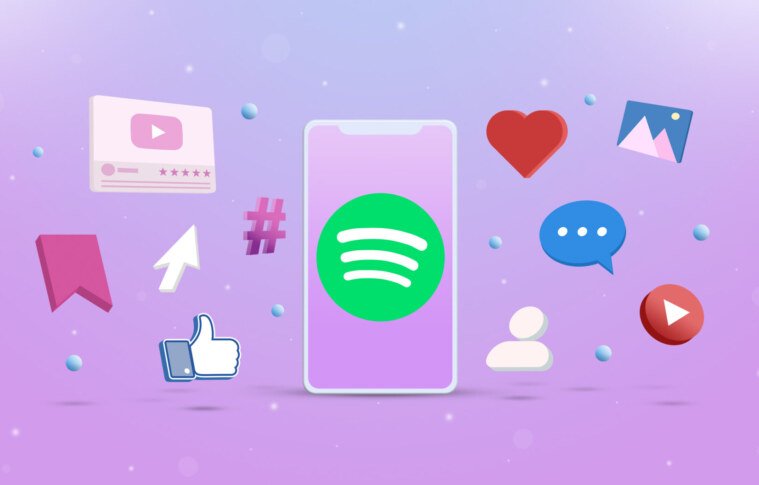Spotify has revolutionized the music streaming industry with its personalized playlists and data-driven approach to user engagement. Features like Discover Weekly, Release Radar, and Daily Mix have become cornerstones of Spotify’s value proposition, delivering tailored content to millions of users. This case study examines how Spotify’s product management strategies leverage personalization, machine learning, and data analytics to enhance user experience and drive engagement.
The Challenge: Standing Out in a Crowded Market
When Spotify launched in 2008, the streaming market was growing but competitive. Platforms like Pandora and Apple Music were already vying for dominance. Spotify faced two critical challenges:
- How to differentiate itself in a crowded space.
- How to keep users engaged and reduce churn.
The Product Management Solution: Personalization
Identifying the Opportunity
Spotify recognized that the key to long-term user retention was music discovery. Listeners often struggled to find new music they loved. By solving this problem through personalized recommendations, Spotify could:
- Build a deeper connection with users.
- Encourage more time spent on the app.
The Role of Data in Personalization
Spotify leveraged big data and machine learning to analyze user behavior, preferences, and listening patterns. These insights powered its recommendation algorithms, enabling features like Discover Weekly and Daily Mix.
Key Personalized Features
- Discover Weekly
- Launched in 2015, Discover Weekly is a curated playlist of 30 songs updated every Monday.
- It uses collaborative filtering and natural language processing to recommend tracks based on a user’s listening habits and those of similar users.
- Result: It became one of Spotify’s most-loved features, driving higher engagement metrics.
- Release Radar
- Personalized playlists showcasing newly released tracks from artists a user follows or listens to frequently.
- Keeps users updated on fresh content, fostering a sense of exclusivity.
- Daily Mix
- Combines familiar tracks with new recommendations, grouped by genre or mood.
- Balances comfort and discovery, enhancing user satisfaction.
- Wrapped
- Spotify Wrapped provides users with an annual summary of their listening habits, creating shareable, personalized content.
- This viral feature increases social engagement and user retention.
How Spotify Builds Personalization
1. Data Collection
Spotify collects vast amounts of user data, including:
- Tracks listened to and skipped.
- Time of day and frequency of use.
- Playlist creation and sharing behavior.
2. Recommendation Algorithms
Spotify uses a combination of:
- Collaborative Filtering: Analyzing similarities between users’ listening habits.
- Natural Language Processing (NLP): Analyzing song metadata, lyrics, and online reviews.
- Audio Analysis: Understanding tempo, pitch, and other sonic features.
3. Feedback Loops
Spotify constantly refines its algorithms based on real-time user interactions, such as skips, replays, and likes.
Impact of Personalized Playlists
User Engagement
- Personalized playlists account for a significant percentage of Spotify’s total streams.
- Features like Discover Weekly increase weekly active users (WAU) by encouraging consistent app usage.
Retention
- Personalized experiences reduce churn by creating a unique value proposition that competitors struggle to replicate.
Viral Growth
- Features like Wrapped have created viral marketing opportunities, with millions of users sharing their personalized results on social media.
Key Product Management Strategies
- User-Centric Innovation
Spotify’s product roadmap is guided by user behavior data, ensuring that new features address real needs. - Incremental Improvements
Spotify releases features iteratively, testing and refining them based on feedback before scaling globally. - Cross-Functional Collaboration
Product teams work closely with data scientists, engineers, and designers to ensure seamless integration of personalization features. - Focus on Emotional Connection
Spotify leverages emotional triggers—like nostalgia (Wrapped) and serendipity (Discover Weekly)—to deepen its relationship with users.
Results and Metrics
- User Base Growth
- Spotify surpassed 500 million monthly active users in 2023, partly driven by its personalized features.
- Increased Listening Time
- Personalized playlists account for over 35% of total listening time on Spotify.
- Retention and Loyalty
- Spotify consistently outperforms competitors like Apple Music and Amazon Music in user retention rates, thanks to its personalized experiences.
Lessons for Product Managers
- Leverage Data to Solve Real Problems
Use data to identify user pain points and design solutions that resonate deeply. - Balance Familiarity with Discovery
Mix familiar content with new recommendations to keep users engaged without overwhelming them. - Invest in Scalable Technology
Robust infrastructure and machine learning capabilities are essential for delivering seamless, personalized experiences. - Create Shareable Experiences
Features like Wrapped demonstrate how personalization can drive organic, viral growth through user-generated content. - Iterate and Refine
Continuously optimize your product based on data-driven insights and user feedback.
Conclusion
Spotify’s personalized playlists are more than just a feature—they’re a cornerstone of its success. By leveraging data-driven insights and focusing on user-centric innovation, Spotify has not only retained its competitive edge but also redefined how people discover and enjoy music. For product managers, Spotify’s story is a masterclass in combining technology, creativity, and data to deliver exceptional user experiences.



